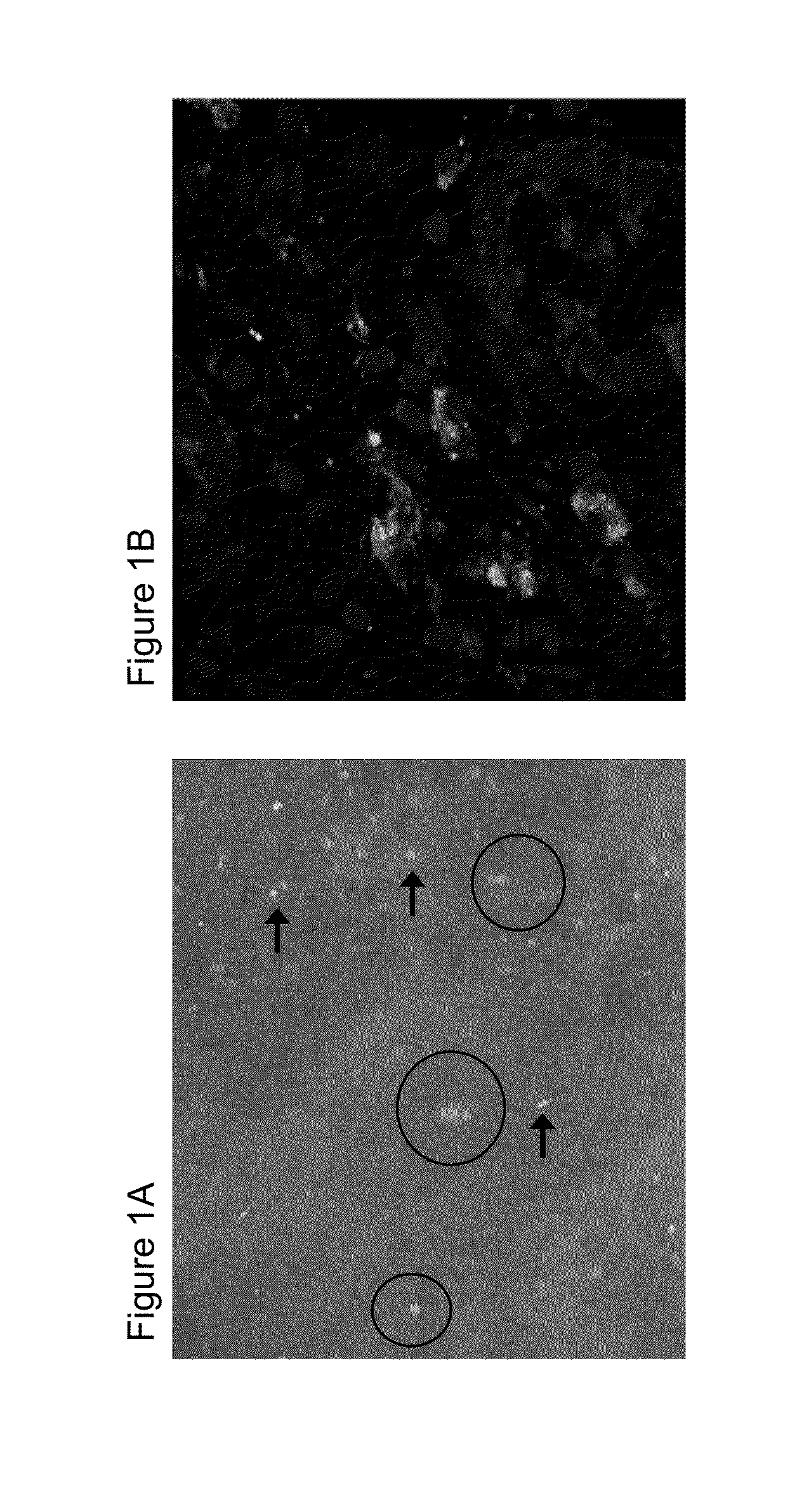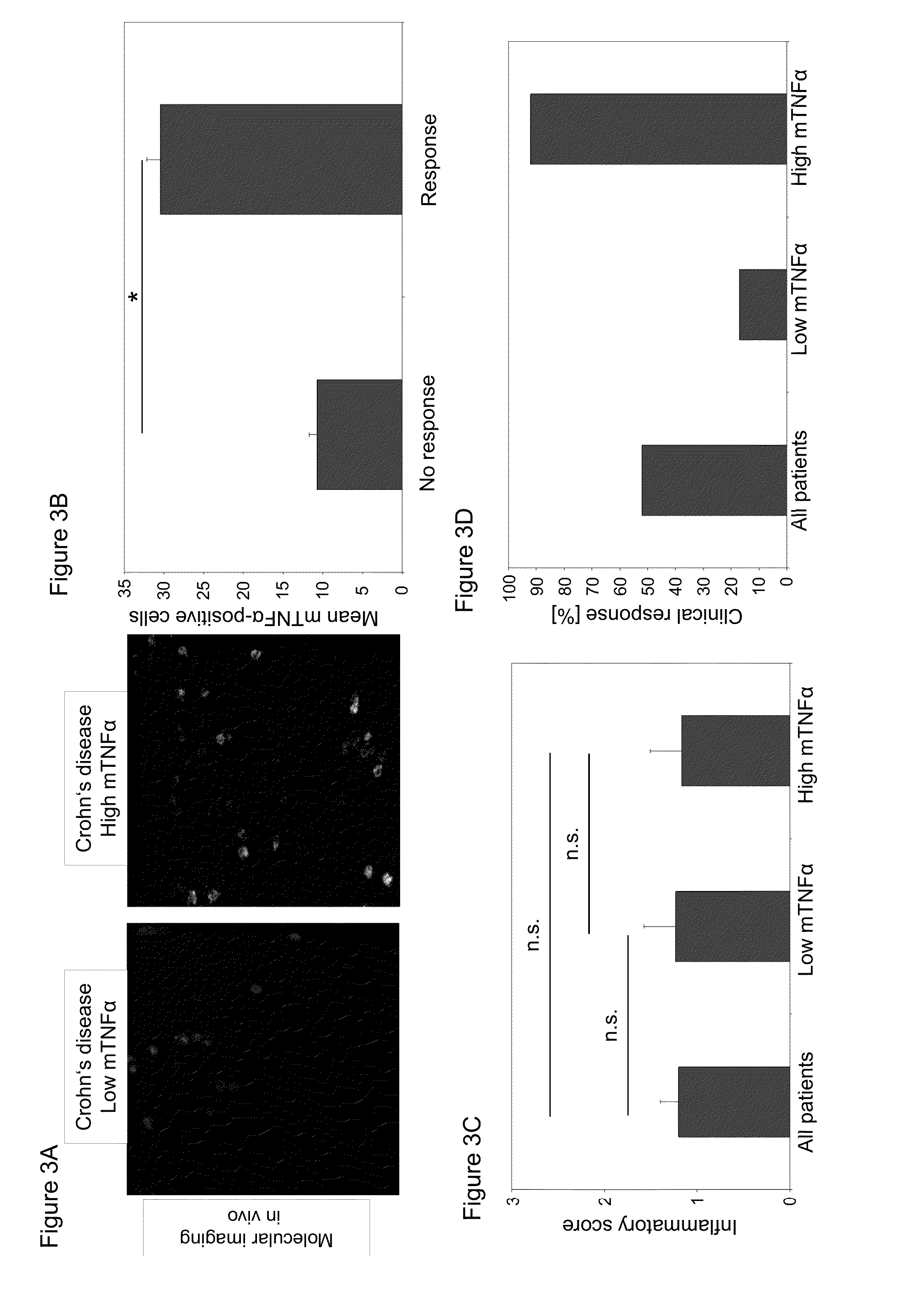Methods and compositions for determining responsiveness to treatment with a tnf-alpha inhibitor
a technology of tnf-alpha inhibitor and responsiveness, which is applied in the field of methods and compositions for determining responsiveness to treatment with tnf-alpha inhibitor, can solve the problems of little or no improvement of clinical symptoms, and the potential exposure to undesired side effects of such treatment, and achieves the effect of low expression level of mtnf, effective and safe treatment method
- Summary
- Abstract
- Description
- Claims
- Application Information
AI Technical Summary
Benefits of technology
Problems solved by technology
Method used
Image
Examples
example 1
Prediction of Responsiveness to Anti-TNFα Antibody For Treatment of Inflammatory Bowel Disease (IBD)
[0174]Biological therapy with antibodies against TNFα has revolutionised treatment of inflammatory bowel diseases, such as Crohn's disease (CD). Sometimes, however, only a subgroup of patients responds to anti-TNFα therapy. As anti-TNFα antibodies suppress immune responses in CD by binding to membrane TNFα (mTNFα) expressing effector cells, the following study examines whether in vivo and ex vivo detection of such cells might be used for prediction of therapeutic efficacy. In order to test the predictive nature of mTNFα, a GMP (Good Manufacturing Practice)-conform, fluorescent anti-TNFα antibody was developed for in vivo molecular imaging. Topical administration of the anti-TNFα antibody in 25 CD patients led to detection of mTNFα positive immune cells in the gut during confocal laser endoscopy. Patients with high amounts of mTNFα positive cells showed significantly higher response ra...
example 2
Topical Administration of Anti-TNFα Inhibitor for Treatment of an Inflammatory Bowel Disease
[0215]The study in Example 1 supports the assertion that it is safe to topically deliver an anti-TNFα antibody, i.e., adalimumab, to the intestinal mucosa of patients having IBD, e.g., Crohn's disease. Thus, an anti-TNFα antibody (e.g., adalimumab), or antigen-binding portion thereof, may be delivered topically to the intestinal mucosa of a patient having an inflammatory bowel disease, such as Crohn's, for treatment. Adalimumab is administered to a subject having Crohn's disease or ulcerative colitis via a spray catheter to deliver the antibody to the intestinal mucosa. In this manner, adalimumab is delivered to the patient via local administration to the intestinal mucosa for treatment rather than through systemic administration. Efficacy for the treatment of Crohn's disease in the patient is then determined according to a decrease in the CDAI. Subsequent treatments are also performed using ...
PUM
| Property | Measurement | Unit |
|---|---|---|
| Molar density | aaaaa | aaaaa |
| Frequency | aaaaa | aaaaa |
| Level | aaaaa | aaaaa |
Abstract
Description
Claims
Application Information
 Login to View More
Login to View More - R&D
- Intellectual Property
- Life Sciences
- Materials
- Tech Scout
- Unparalleled Data Quality
- Higher Quality Content
- 60% Fewer Hallucinations
Browse by: Latest US Patents, China's latest patents, Technical Efficacy Thesaurus, Application Domain, Technology Topic, Popular Technical Reports.
© 2025 PatSnap. All rights reserved.Legal|Privacy policy|Modern Slavery Act Transparency Statement|Sitemap|About US| Contact US: help@patsnap.com



